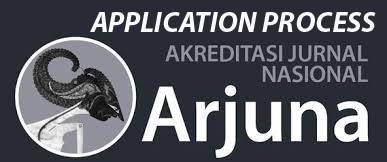Neuroscience in HR : Employee Behavior Analysis to Optimize Performance
DOI:
https://doi.org/10.54066/ijmre-itb.v3i2.3135Keywords:
Emotional intelligence, Employee performance, Neuroscience factors, Work motivationAbstract
This study aims to analyze the effect of work motivation, neuroscience factors, emotional intelligence, and job type on employee performance. This research uses quantitative methods with multiple linear regression approaches. Data was collected from 100 respondents who work in various industrial sectors. The results showed that emotional intelligence and work motivation have a significant influence on employee performance, while neuroscience factors and job type did not show a significant influence. The F-test yields a value of 21,795 with a significance of 0.000, which indicates that simultaneously, the independent variables in this model have a significant effect on employee performance. The R-Square value of 0.479 indicates that 47.9% of the variation in employee performance can be explained by the variables used in the model, while 52.1% is explained by other factors outside this model. The results of this study indicate that companies need to improve employees' work motivation and emotional intelligence to optimize their performance. In addition, this study recommends exploring additional variables that may affect employee performance to improve the accuracy of the prediction model.
References
A Critical Review of Motivational Theories in Management and their Role in Modern Era. (2021). https://doi.org/10.52783/trs.v7i5-1.1405
Bajwa, R. R., Rahim, R., Mukhtar, M. A., & Akmal, H. (2024). Examining the link between stress management strategies and employee performance in high-pressure industries. Review of Applied Management and Social Sciences, 7(4), 915–927. https://doi.org/10.47067/ramss.v7i4.422
Bigliassi, M., Cabral, D. F., & Evans, A. C. (2025). Improving brain health via the central executive network. The Journal of Physiology. https://doi.org/10.1113/jp287099
Bokhari, S. S. A., & Ghaffar, A. (2024). Emerging trends in human resource management: Exploring digital transformation, employee well-being, and remote work paradigms. Journal for Business Education and Management, 4(2), 1–16. https://doi.org/10.56596/jbem.v4i2.139
Bose, S., & Mohanty, S. (2024). Interrelationship between motivation with job satisfaction and productivity parameter by talent acquisition team: A case study. Paper Asia, 40(4b), 19–30. https://doi.org/10.59953/paperasia.v40i4b.107
Dalalana, C. R., Antunes Neto, J. M. F., & Fracarolli, R. L. (2024). Application of neuroscience in organizations from the perspective of leadership training: A literature review. IOSR Journal of Business and Management. https://doi.org/10.9790/487x-2609092433
Deci, E. L., Olafsen, A. H., & Ryan, R. M. (2017). Self-determination theory in work organizations: The state of a science. Social Science Research Network, 4(1), 19–43. https://doi.org/10.1146/ANNUREV-ORGPSYCH-032516-113108
Ferreira, S., Rodrigues, M. A., Mateus, C., Rodrigues, P. P., & Rocha, N. (2025). Interventions based on biofeedback systems to improve workers’ psychological well-being, mental health, and safety: A systematic literature review (Preprint). https://doi.org/10.2196/preprints.70134
Frisina, M. E. (2024). Best behaviors: Leveraging neuroscience to enhance leadership skills. Frontiers of Health Services Management, 41(2), 4–12. https://doi.org/10.1097/hap.0000000000000205
Ghosh, O., & Kumar, B. (2024). The brain at work (pp. 1–14). IGI Global. https://doi.org/10.4018/979-8-3693-1858-4.ch001
Jeni, A., & Reddy, K. J. (2024). Enhancing neurocognitive skills for effective leadership and decision-making (pp. 208–226). IGI Global. https://doi.org/10.4018/979-8-3693-1858-4.ch012
Khushk, A., Liu, Z., Xu, Y., & Liu, H. (2025). Impact of multifaceted morality on employee well-being: A systematic literature review. The International Journal of Organizational Analysis. https://doi.org/10.1108/ijoa-03-2024-4326
Knights, J. (2024). The neuroscience of leadership (pp. 39–50). Informa. https://doi.org/10.4324/9781003409007-6
Kulshrestha, P., & Kulshrestha, D. (2024). Significant impact of neuroscience in developing a new talent acquisition strategy (pp. 257–271). IGI Global. https://doi.org/10.4018/979-8-3693-1785-3.ch017
Lakshmi Priya, M. D., & Jayalakshmi, G. (2024). Exploring innovative practices in digital human resource management. Advances in Logistics, Operations, and Management Science Book Series, 137–156. https://doi.org/10.4018/979-8-3373-1137-1.ch007
Lee, C. (2024). Artificial neural networks (ANNs) and machine learning (ML) modeling employee behavior with management towards the economic advancement of workers. Sustainability, 16(21), 9516. https://doi.org/10.3390/su16219516
Mathur, M., Pramanik, B., Rosalyn, S., Thulaseedharan, A., Mirzani, Y., & Namdeo, S. (2024). Ethical implications of AI in HRM: Balancing efficiency and privacy in employee monitoring systems. Nanotechnology Perceptions, 4490–4496. https://doi.org/10.62441/nano-ntp.vi.3870
McCreedy, R. T. W. (2024). Change on the brain? The neuroscience of organizational transformation. International Journal of Applied Research in Management and Economics, 7(3), 30–44. https://doi.org/10.33422/ijarme.v7i3.1402
Neural mechanisms of decision making. (2023). Physics Subject Headings (PhySH). https://doi.org/10.29172/2fc1722f-3725-4f4b-8c0c-4c05c97204b2
Putri, A. H., Rohimah, N., Elizafitriani, A., & Merdiaty, N. (2024). Model stres kerja dan dampaknya pada produktivitas: Analisis literatur. Deleted Journal, 3(1), 266–275. https://doi.org/10.61132/observasi.v3i1.962
Rachmawati, E., Sumartono, E., Rini, A. S., Wiliana, E., & Faqih, M. (2024). The interplay between employee motivation, work-life balance, and job satisfaction in enhancing workplace productivity. Global International Journal of Innovative Research, 2(6), 1383–1396. https://doi.org/10.59613/global.v2i6.211
Restrepo, A. P. M., & Valencia, M. R. (2014). Motivating employees: Beyond the carrot-and-stick techniques. AD-Minister, 24, 143–160. http://www.scielo.org.co/scielo.php?script=sci_arttext&pid=S1692-02792014000100008&lng=en
Saputrabey, M. A., Sepriyanti, Y., Riyanto, R., Moeins, A., & Zen, Y. (2025). Enhancing digital motivation work and its effect on digital target-based employee performance at regional revenue agency of DKI Jakarta province. Edelweiss Applied Science and Technology, 9(1), 968–980. https://doi.org/10.55214/25768484.v9i1.4296
Sharma, V., & R, V. (2024). Analyzing the relationship between employee motivation and job satisfaction. Shanlax International Journal of Management. https://doi.org/10.34293/management.v11is1-mar.8048
Wei, J. (2024). The role of motivation in decision-making and underlying neural mechanism. Communications in Humanities Research, 40(1), 100–106. https://doi.org/10.54254/2753-7064/40/20242333
Downloads
Published
How to Cite
Issue
Section
License
Copyright (c) 2025 International Journal of Management Research and Economics

This work is licensed under a Creative Commons Attribution-ShareAlike 4.0 International License.







